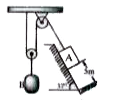A
B
C
D
Text Solution
Verified by Experts
The correct Answer is:
|
Topper's Solved these Questions
NEWTONS LAWS OF MOTION
AAKASH SERIES|Exercise PRACTICE SHEET (EXERCISE - II) (LEVEL - II) ( More than one correct answer Type Questions )|4 VideosView PlaylistNEWTONS LAWS OF MOTION
AAKASH SERIES|Exercise PRACTICE SHEET (EXERCISE - II) (LEVEL - II) ( Linked Comprehension Type Questions )|4 VideosView PlaylistNEWTONS LAWS OF MOTION
AAKASH SERIES|Exercise PRACTICE SHEET (EXERCISE - II) (LEVEL - I) (Straight Objective Type Questions)|34 VideosView PlaylistMOTION IN A STRAIGHT LINE
AAKASH SERIES|Exercise Questions for Descriptive Answers|7 VideosView PlaylistOSCILLATION
AAKASH SERIES|Exercise QUESTIONS FOR DESCRIPTIVE ANSWERS|12 VideosView Playlist
Similar Questions
Explore conceptually related problems
Knowledge Check
A
B
C
D
Submit
A
B
C
D
Submit
A
B
C
D
Submit
Similar Questions
Explore conceptually related problems
AAKASH SERIES-NEWTONS LAWS OF MOTION -PRACTICE SHEET (EXERCISE - II) (LEVEL - II) (Straight Objective Type Questions)
- The blocks A and B shown in the figure have masses MA = 5 kg and MB = ...
12:39
|
Playing Now - Two insects each of mass m moves with accelerations a1 = a2 = g//2 re...
03:26
|
Play - The block A is pushed towards the wall by a distance and released. The...
02:43
|
Play - In the given fig, pulley is frictionless and massless. Both the spring...
08:22
|
Play - All surfaces shown in the figure are smooth. System is released with t...
04:19
|
Play - Two blocks are connected by a spring. The combination is suspended, at...
04:29
|
Play - The block shown in figure is in equilibrium cut. Find acceleration of ...
04:02
|
Play
